I no longer remember where I got a small jar of Magnesium chloride or why I had it. That I dissolved some to make crystals and then subjected them to examination under polarized light is not at all a surprise, since I tend to do that with almost anything that I think will crystallize. However, I certainly had no idea of the adventure which I was embarking on nor did I know that I would become mildly,–O.K.–deeply, obsessed with Magnesium chloride images. However, there is one aspect of this adventure about which I for some years now, have procrastinated. Living up here in the frozen wastelands, every winter we buy a number of 25 pound bags of ice melt, a salt mix which we spread around on the ice hoping to reduce the risk of falling. And 5 or 17 years ago, I discovered that some ice melt has a very high Magnesium chloride content. Every winter since then, I think I need to take some of that and make some crystals. I haven’t yet, however–good news–I just wrote myself a note to remind me to do that tomorrow and I have placed it strategically with the other 327 notes on my desk.
Magnesium chloride (I don’t want to have to keep typing this so, from now on, let’s simply use MC) is a fascinating substance; it provides very small, highly geometrical crystals in large number with great diversity on a single slide. However, this means that you need to scan patiently at moderate to high magnifications. However, the fun is just beginning; MC is deliquescent and readily “pulls” water out of the atmosphere. I live in an area which is described as “high plains” or sometimes “semi-desert”. So, those of you who live in humid places will have an even greater problem What problem? Well, these are thirsty little crystals and when they extract moisture from the air, they can dissolve or partly dissolve and then change form and do this faster than you can wave a wand. In practical terms, what this means is that you need a quick trigger finger on your camera when you find a crystal that you want to photograph.
For me, the experience of going back and finding a file of images which I took 10 or more years ago is rather like the experience of going back and finding old cigar boxes or shoe boxes which contain treasures found or collected in childhood. Cigar boxes are now an endangered species, but in my childhood, I remember they were highly prized, because one could place ones precious objects in them and yet they were compact and flat enough to fit in a drawer. Furthermore, they brought us culture. The inside lid of the Dutch Masters cigar box displayed the 1662 painting by Rembrandt of The Syndics of the Drapers’ Guild. Shoe boxes had their own virtues. They were much sturdier than the flimsy sorts used today and because they were deeper and longer than cigar boxes, one could save larger treasures and yet still find room for them on a closet shelf.
Opening up such boxes, one might exclaim: “Oh, I had forgotten all about that” or “There that is; I always wondered what happened to it.” Well, these old image files allow me a kind of parallel experience and a sense of joy and rediscovery.
Some pedestrian minds will say that many of these images look alike,–rectangular and colored–so what? And I’ll tell you right now, if you don’t like colorful rectangles, then you could instead spend your time with the book titled: “Cubes, Cones, Cylinders and Spheres” because if you stay here you’re going to be inundated with rectangles and quasi-rectangles and even a few unrectangles.
Let’s start with one which looks like one of those cute little thumb-sized flash drives that are so easily misplaced or lost.
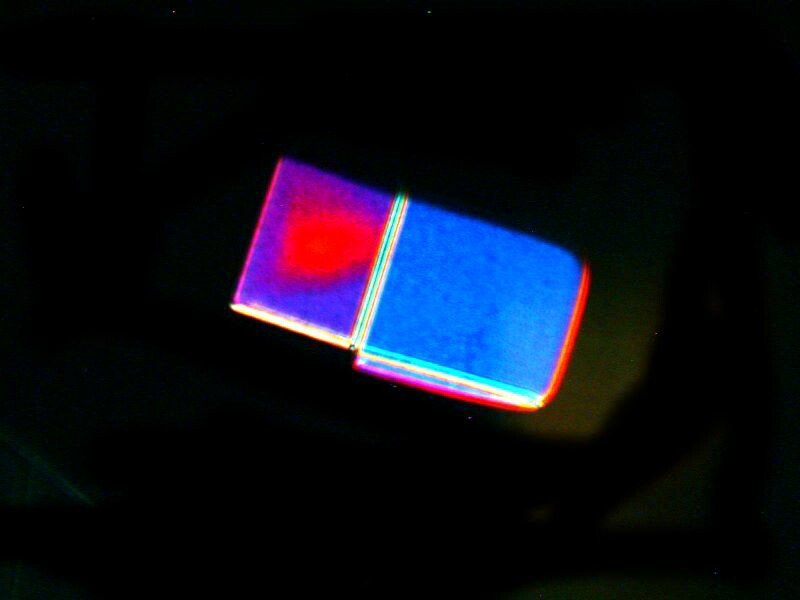
And it retains it’s geometric integrity even when we subject it to inversion.
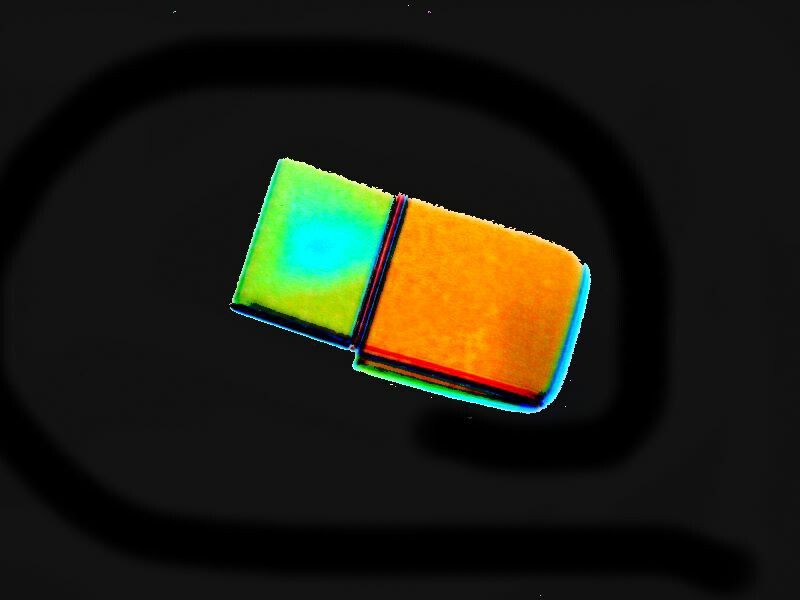
These are just MC pure and not so simple and this will be true of most of the images. If the MC is mixed with another substance, I will let you know. All of the images are taken with polarized light.
Let’s look at some more examples along with their inverse images. Here’s a nice rectangle with a “chipped” corner.
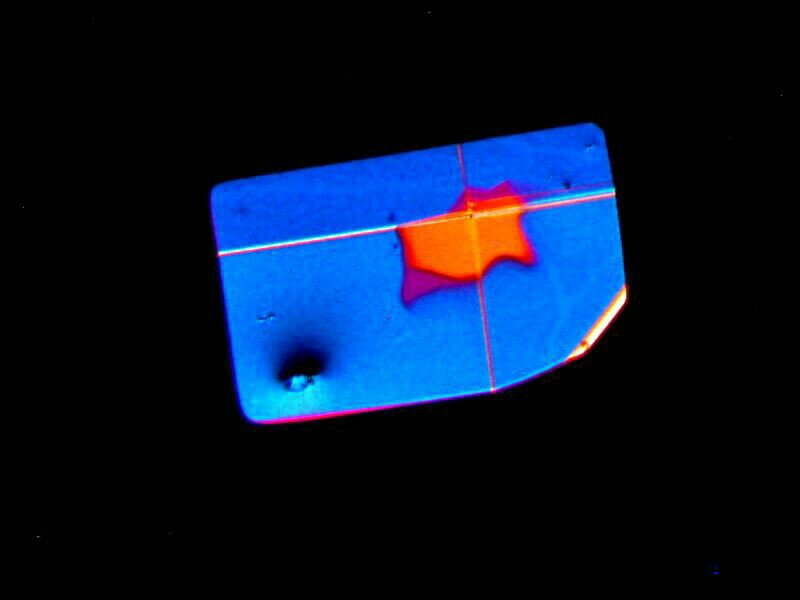
Also note that there is a vertical line and a horizontal line each of which pass from edge to edge thus forming a cross or perhaps the axes for a graph. These lines are even clearer in the inverse image.
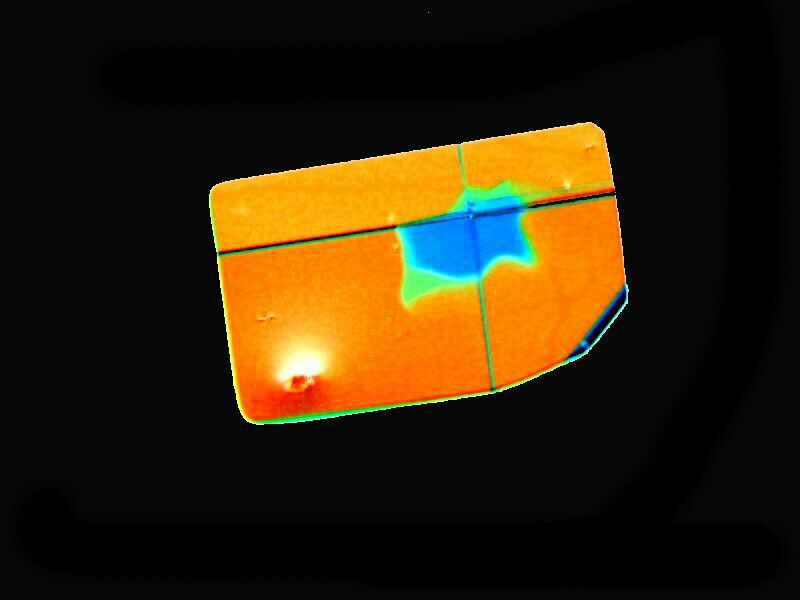
Next another slightly “deformed” rectangle and more geometry ; here we have 2 parallel lines running across the long side.
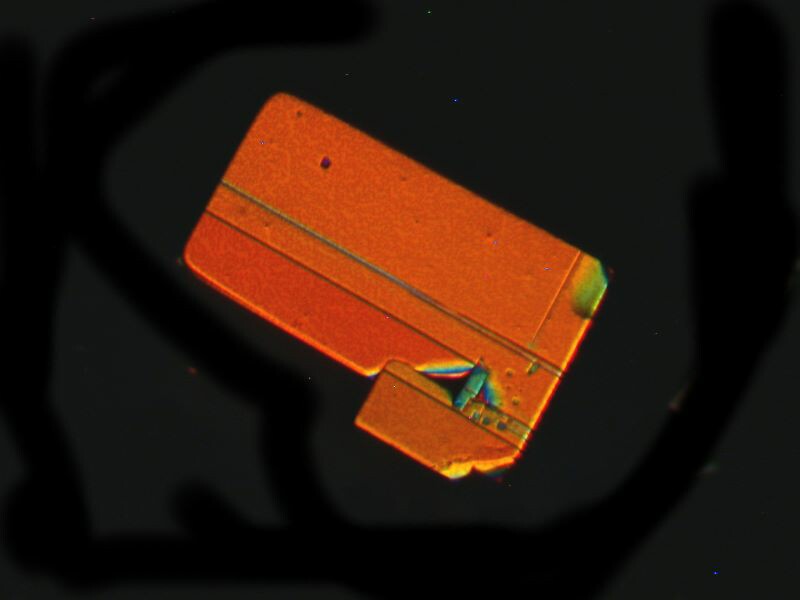
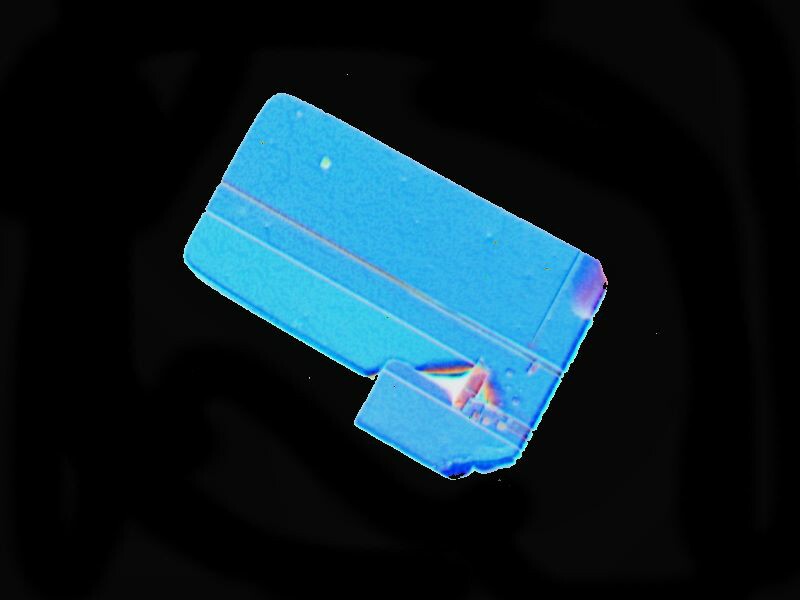
Then we find a “perfect” rectangle with a strong horizontal line. Interestingly, in the first image, the line appears to be projecting outwards slightly, whereas in the inverse image the line appears to be slightly depressed into the surface.
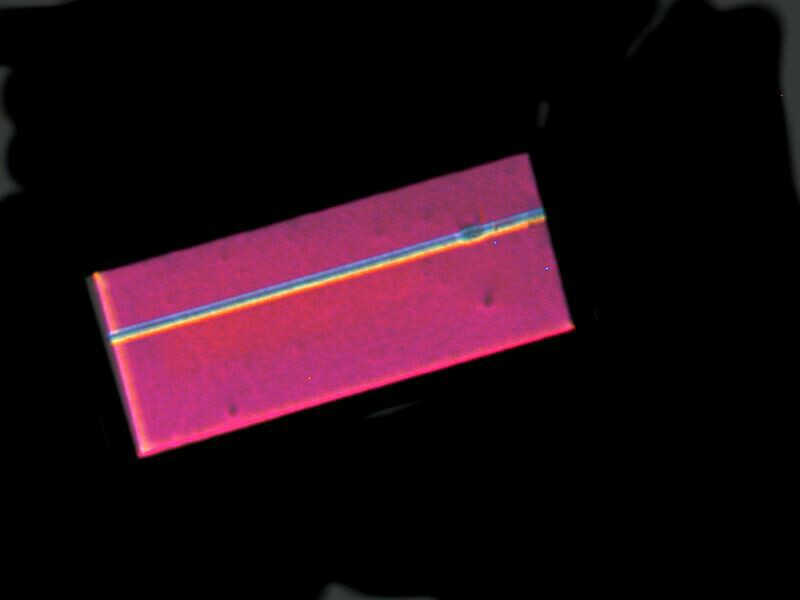

Now we’re at the point where we can begin to construct a chart mapping out the color shifts from standard to inverse images. Blue goes to orange, red to green, orange to blue, white to black, and then there are all kinds of tiny, subtle variations which you can chart if you’re obsessive-compulsive. Oh yes, and light lemony yellow goes to a light cardboard brown. I”ll admit that these shifts are quite interesting and I appreciate seeing them, but I’m too old to take time to map them out. Sometimes, these basic color pattern shifts are so striking that one can’t help but stop and take notice of them as is the case in the images below.
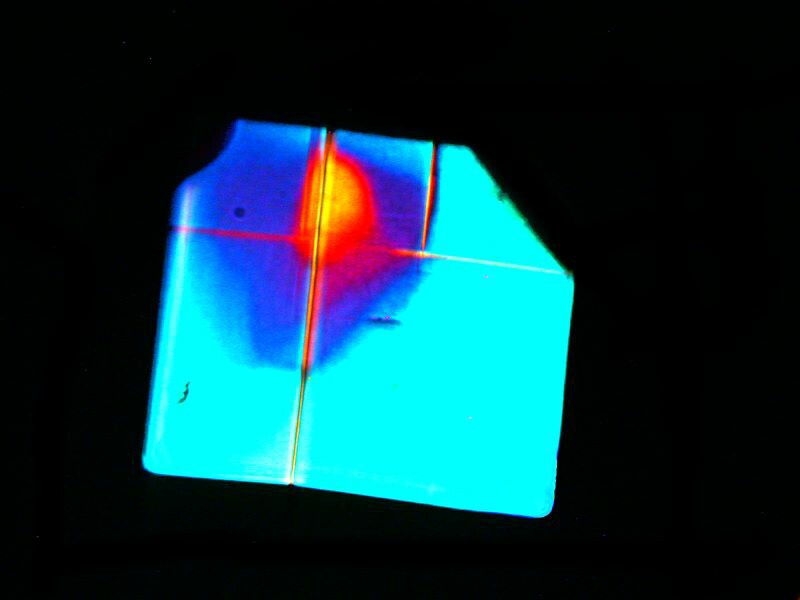
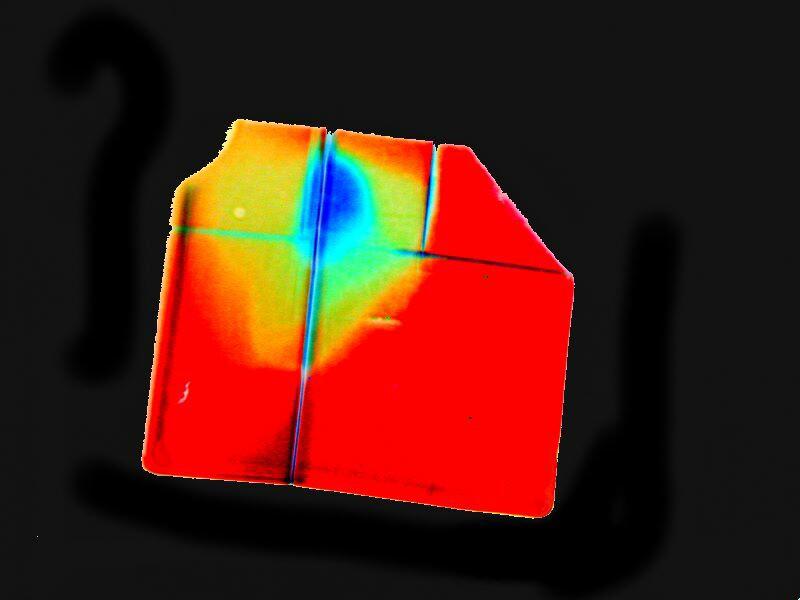
However, not all the MC (Magnesium chloride, in case you’ve forgotten) images are so geometrically”simple” nor are their color patterns and shifts always easily describable. Consider the following image and its inverse.
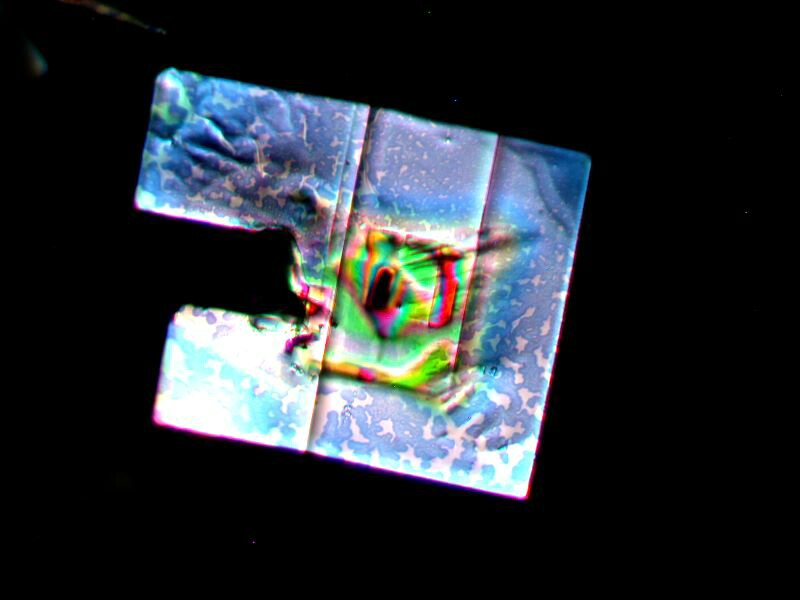
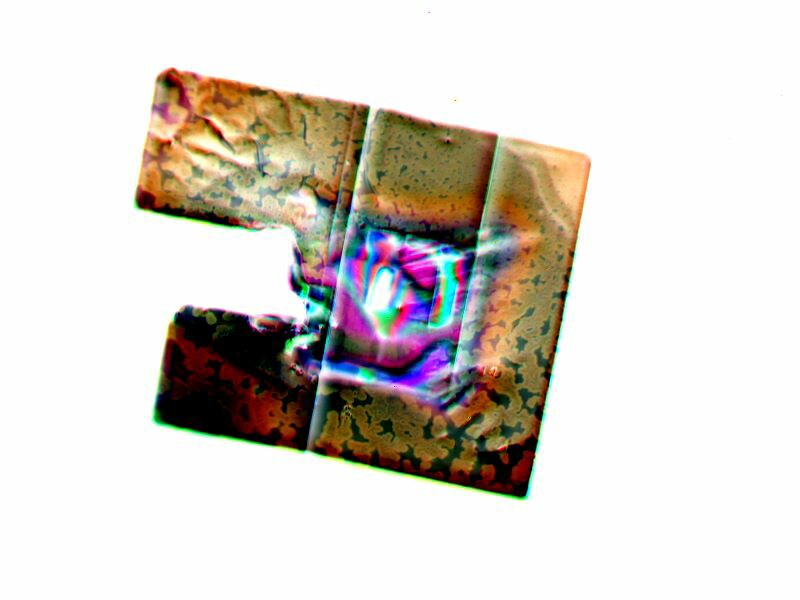
However, just to keep things interesting. Look at what I found over on the edge of the slide. Again, I give you 2 images 1) with a black background and 2) its inverse.

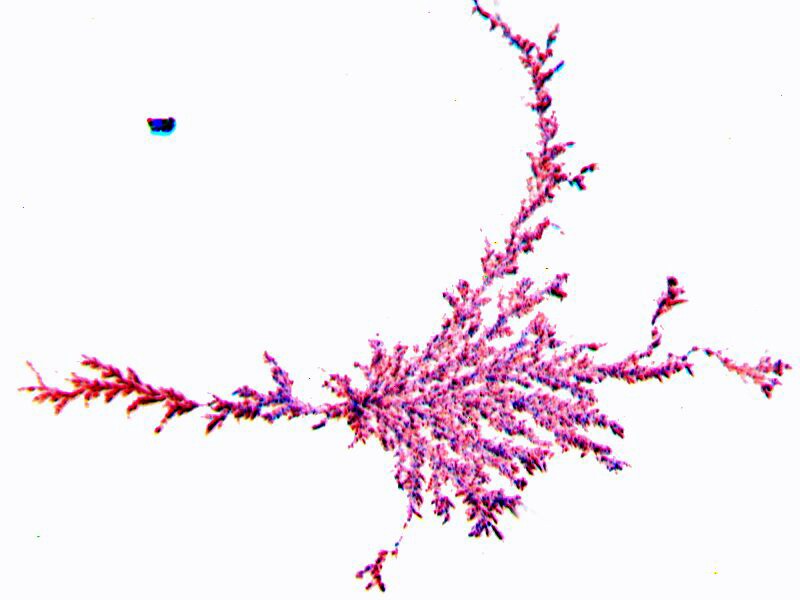
No, you say. You’re putting us on. Would I do that? Well, yes, but this time I’m not. Look carefully at that little speck up in the upper left quadrant and, surprise, surprise, it’s geometric!
Now, if you like a floral pattern with your geometry, just ask and it shall be given–again black background and inverse.
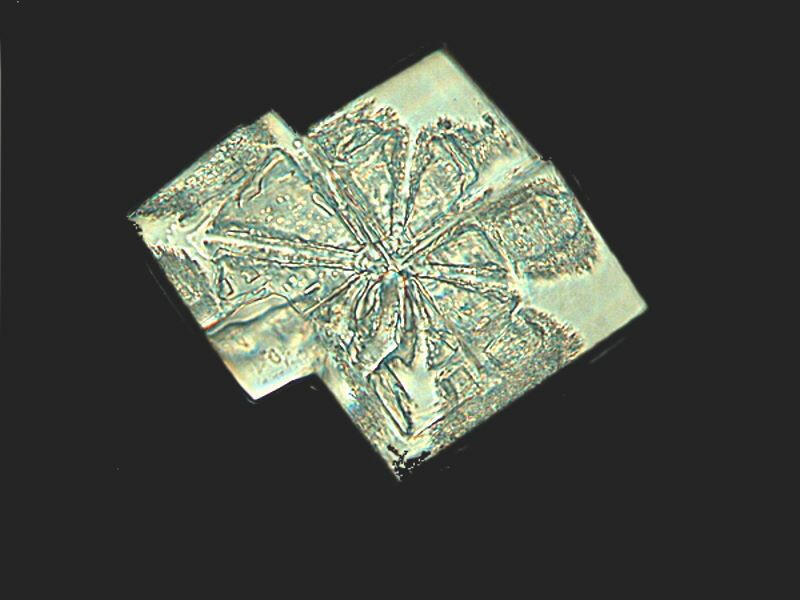
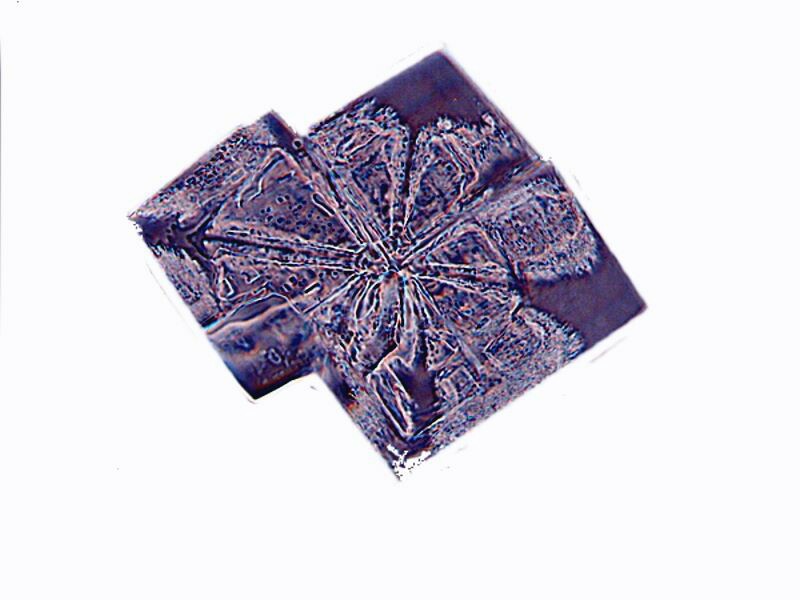
There’s something here for everybody, even a pistol from the planet Euclid.
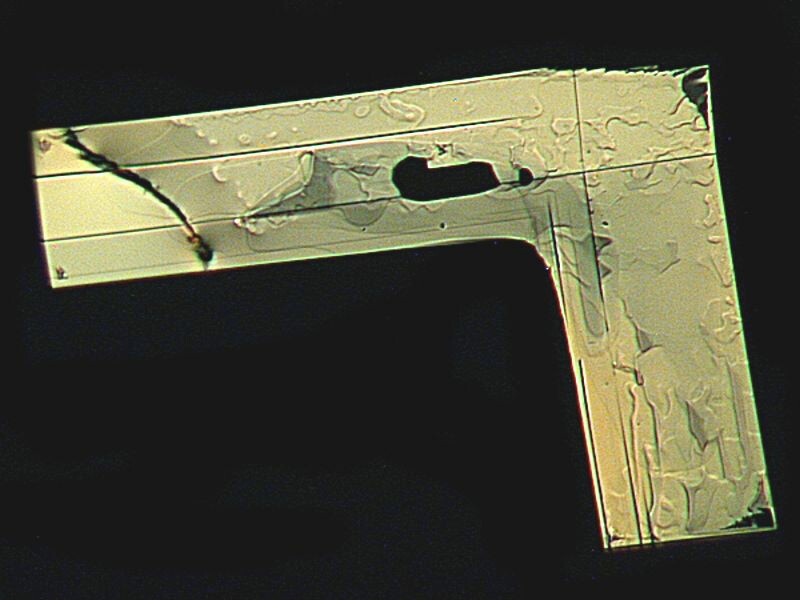
Or, if you’d prefer something a little more high-tech in hand-held weaponry, we can provide that as well.
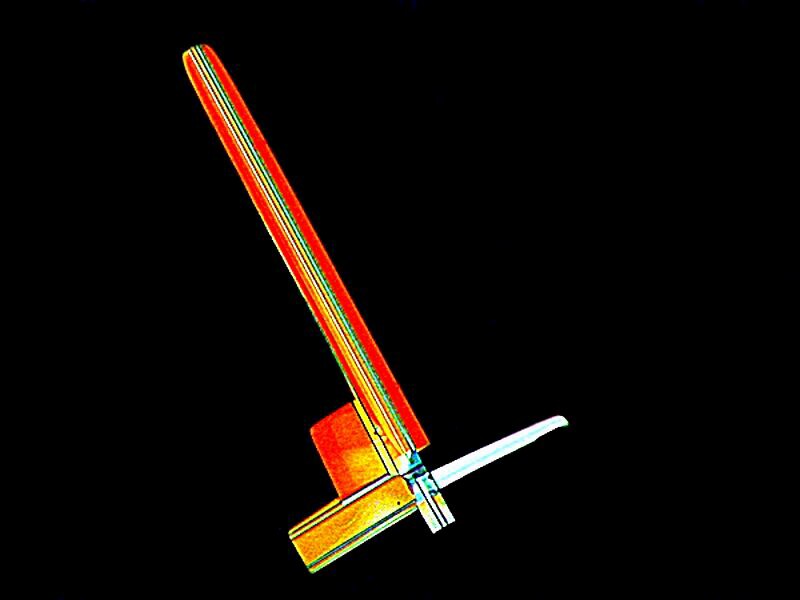
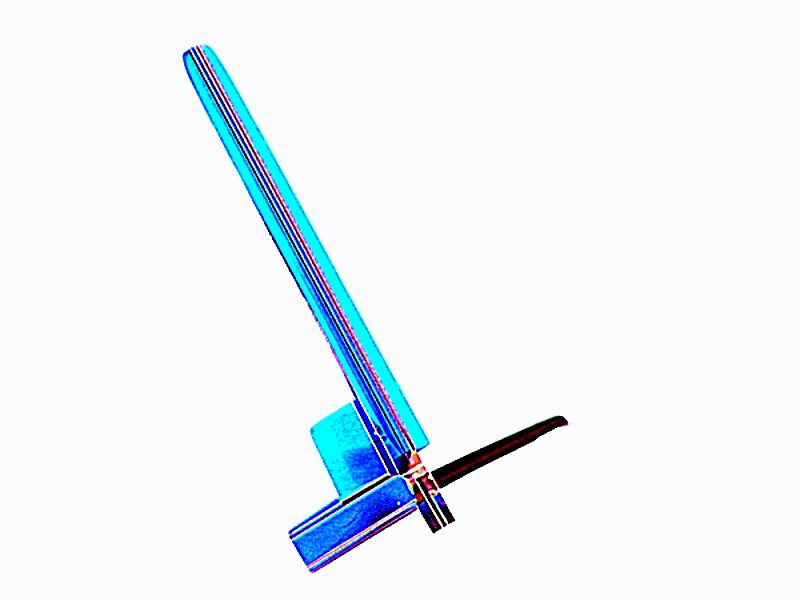
As I said, something for everybody, even those who like whimsical abstract art somewhat in the manner of Paul Klee. Consider the following 5 images and try to convince me that they’re not playful in the very best sense, which suggests that sometimes Mother Nature can have a light sense of humor.
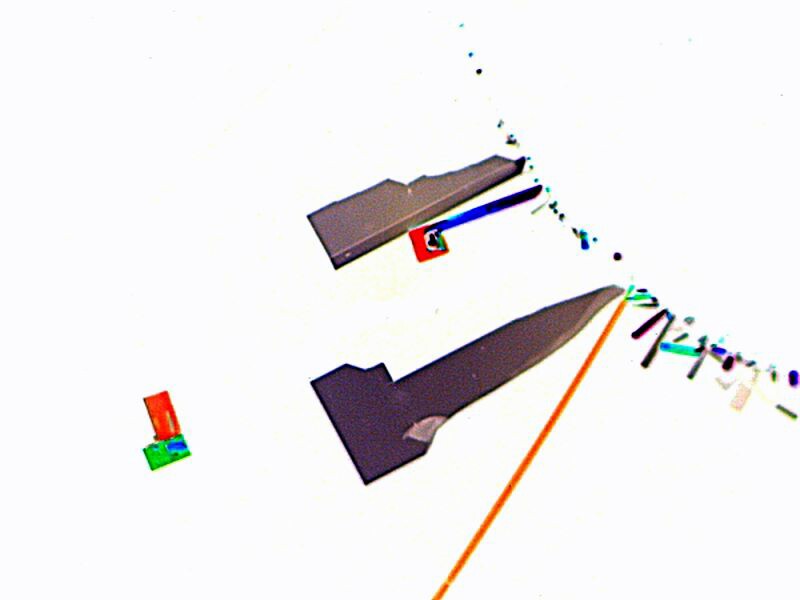
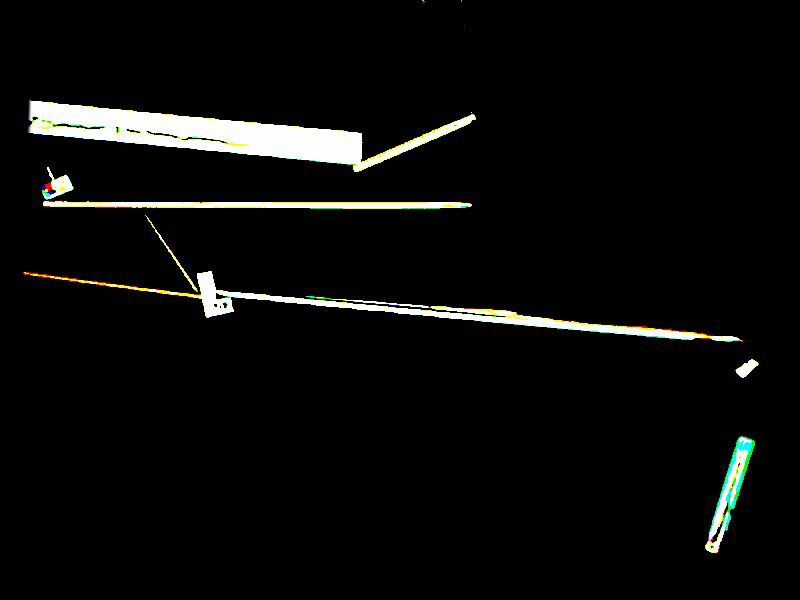

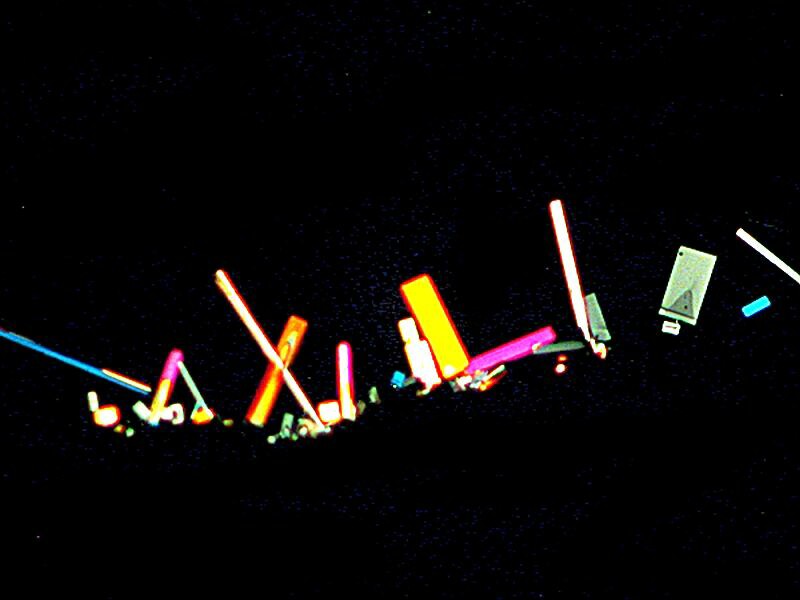
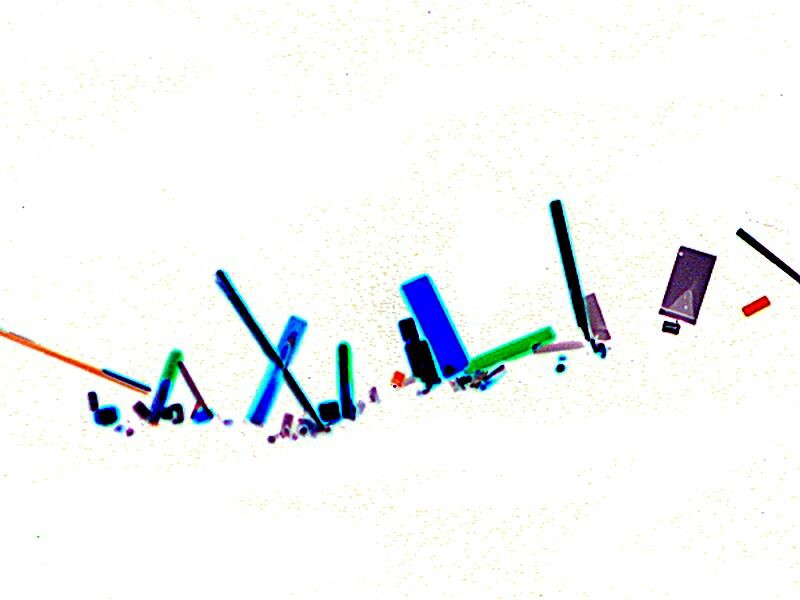
And for those of you who don’t like those alien pistols and are more refined in your taste in weapons and prefer elegant swords
well, we have those too, as you can see.
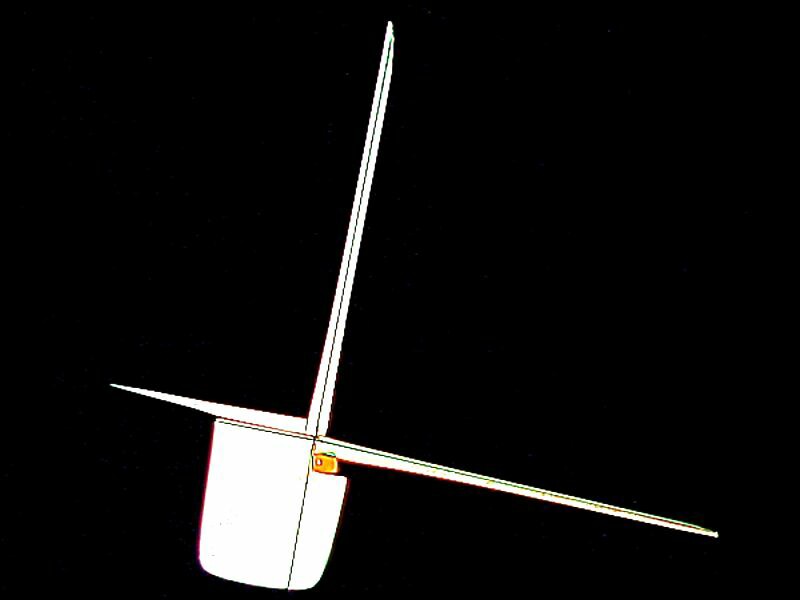
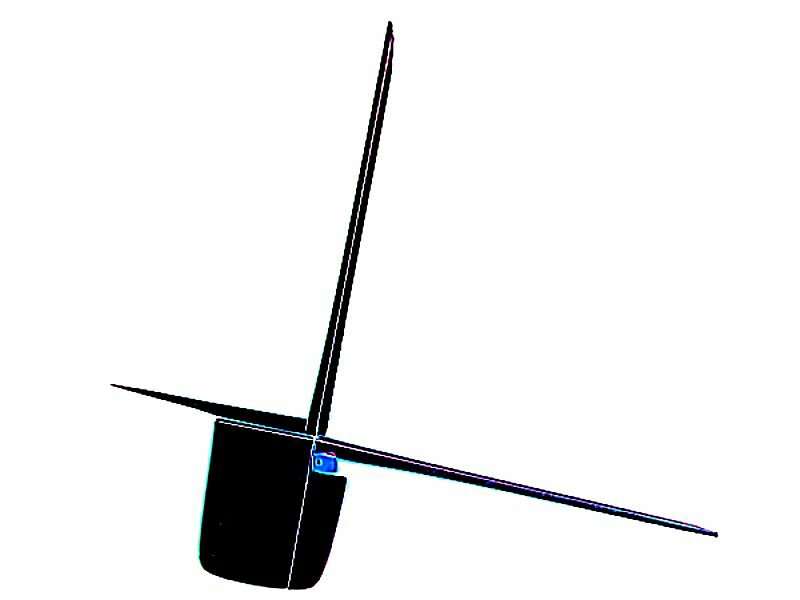
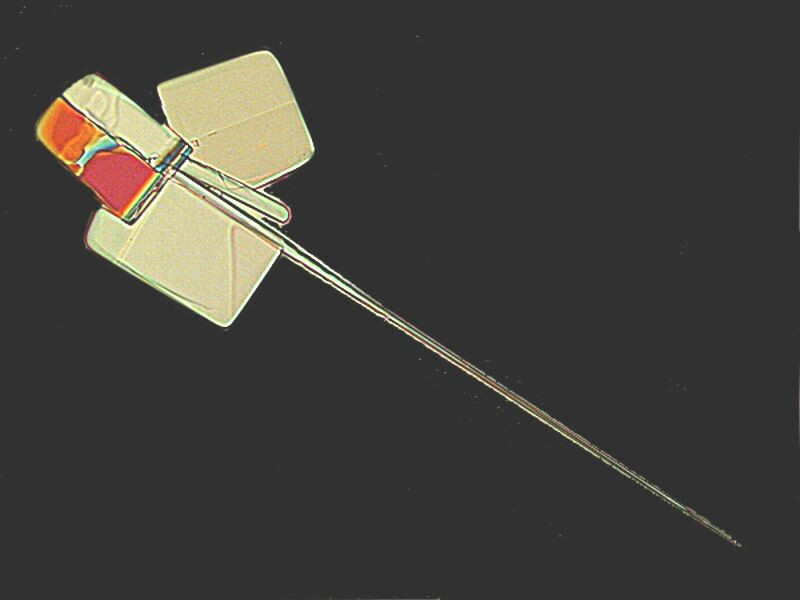

Although, I can’t for the life of me (no pun intended) imagine how being skewered is preferable to being promptly dispatched (hopefully) by a well-placed bullet.
I’m sure that by now you all realize that by using microscopes and crystals, we can move to other dimensions of the universe (I wish!). However, in any case, I discovered rectangular alien eggs with embryos inside them and I’ll show you 3 absolutely convincing images (endorsed by Donald Trump).
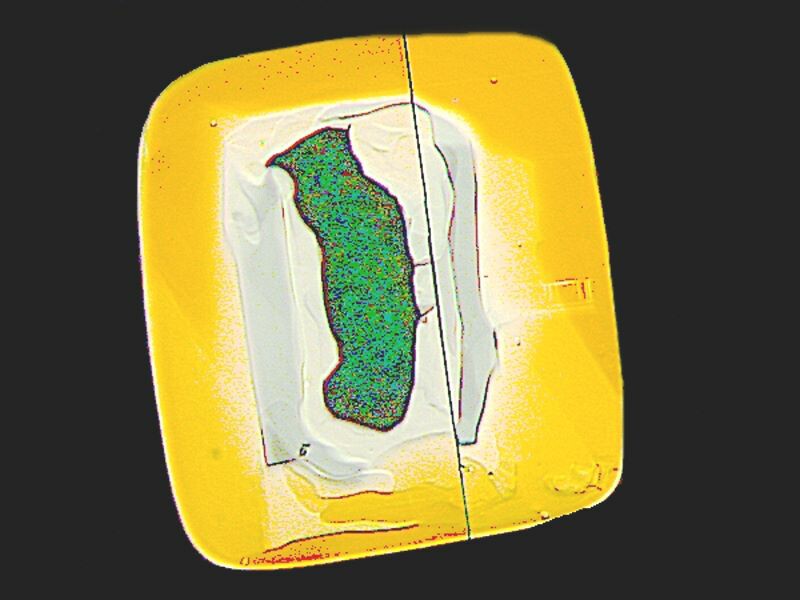
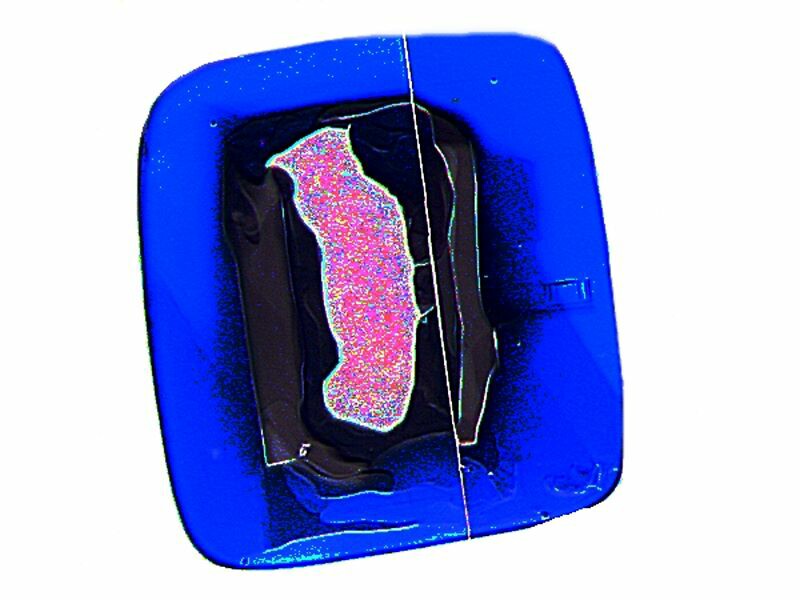
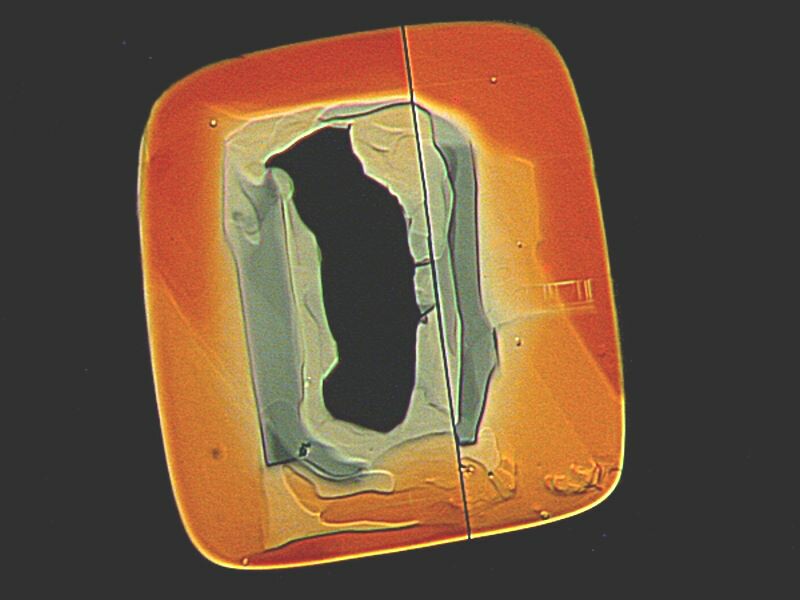
As you can see, they go through the ripening process from green to pinkish-red to black.
And then, would you believe it, I found 3 beautifully colored alien credit cards in nice convenient little pouches. Pay attention Madison Avenue!
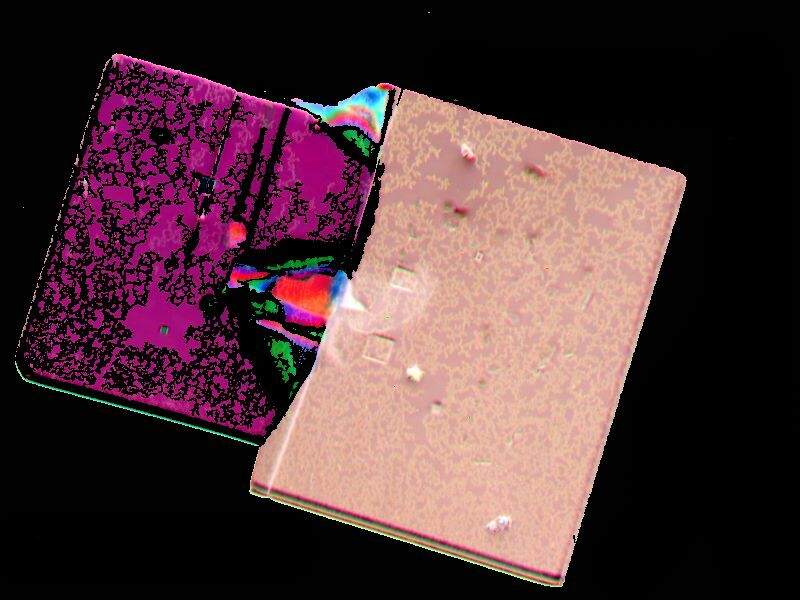
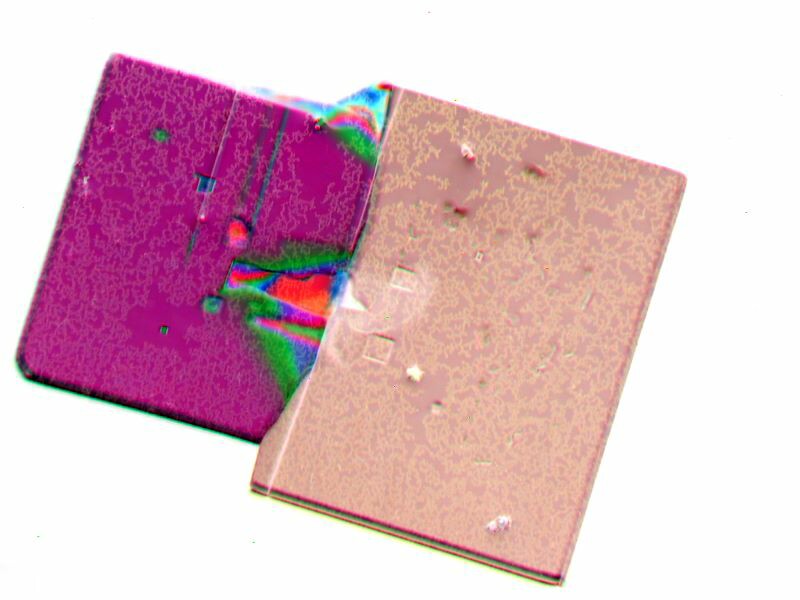
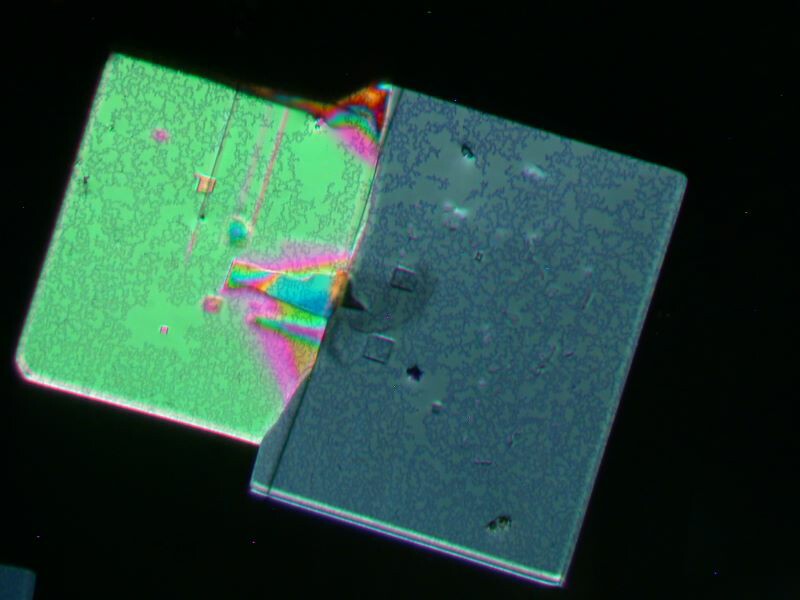
However, it must be said that those aliens that build using MC (Magnesium chloride–remember?) tools came up with some quite strange stuff that seems pretty weird, even useless to us. However, given our primitive state of development and the fact that we live in a world that is still essentially a collection of tribal cultures, we’re not in a very good position to play the role of critics from the standpoint of our cosmic ignorance. With that in mind, here are a few alien MC tools and small construction pieces.

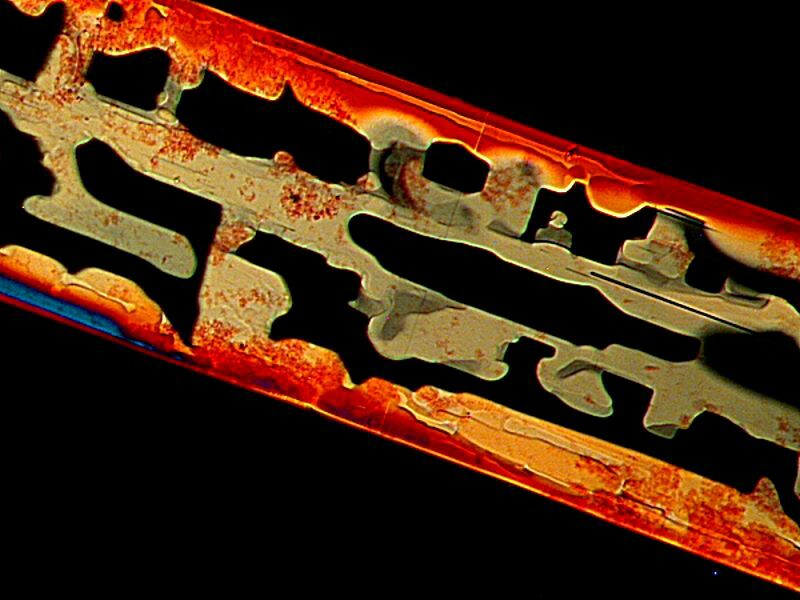

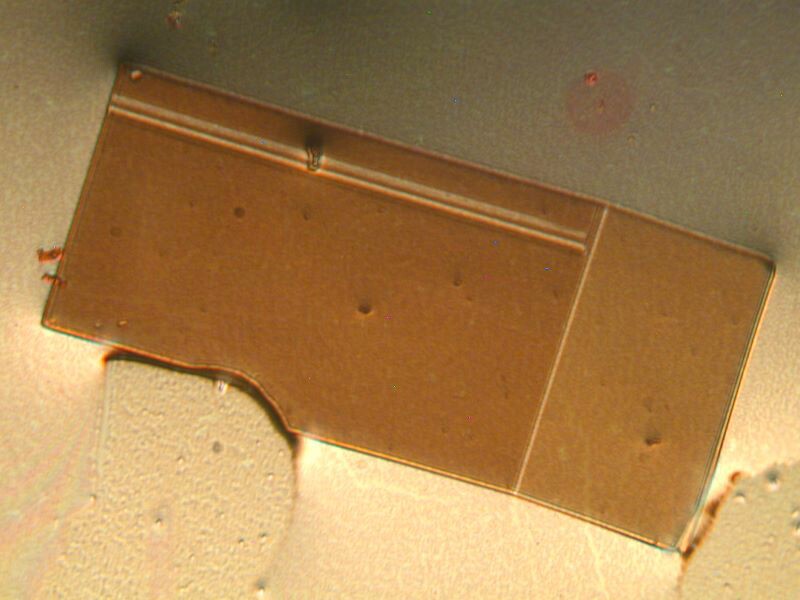
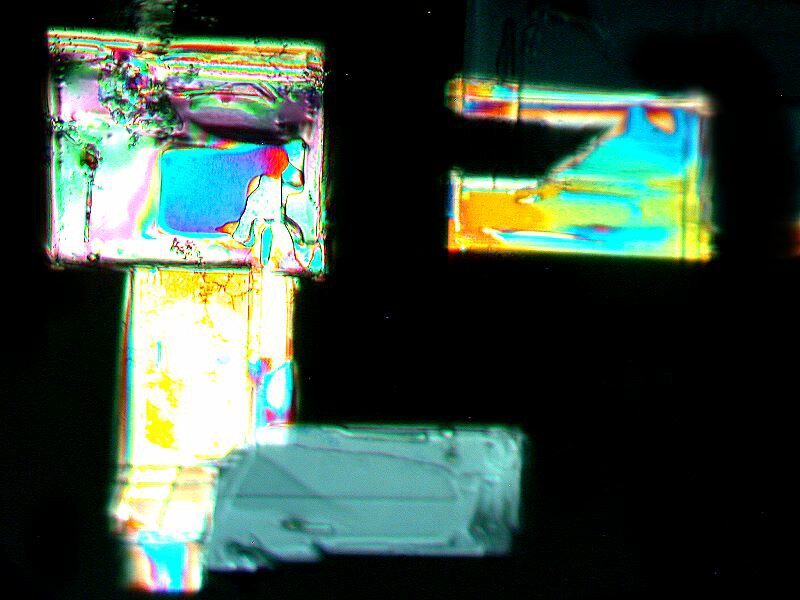
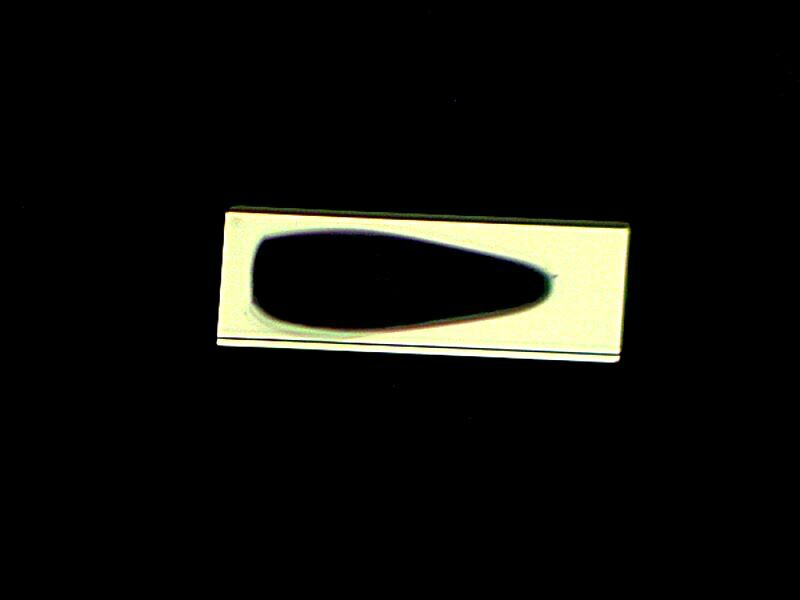
Finally, an admonition to all lozenge manufacturers whether it be cough drops, hard candies, or medications–get some inspiration from MC and watch your profits soar!
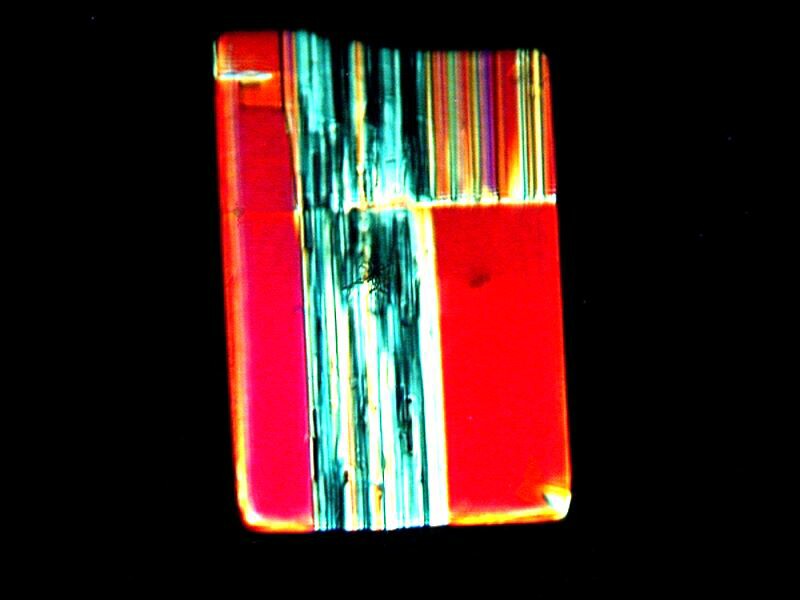
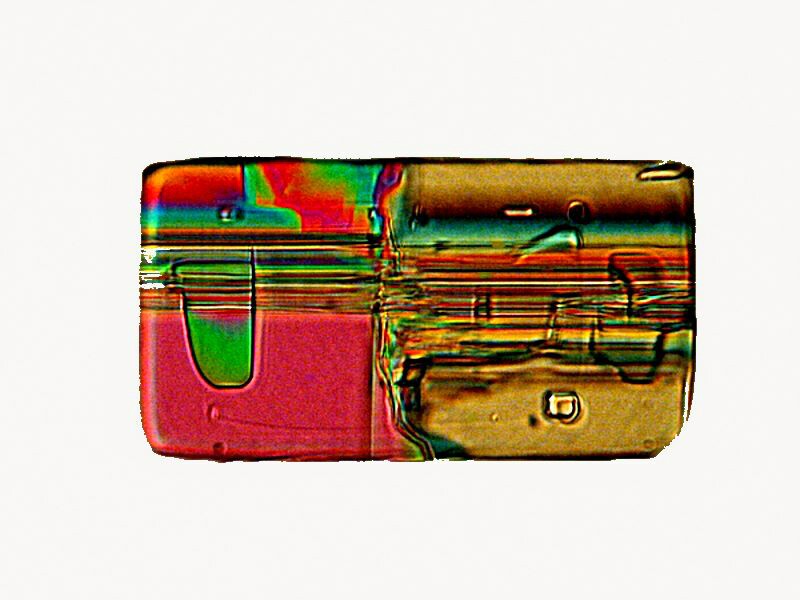
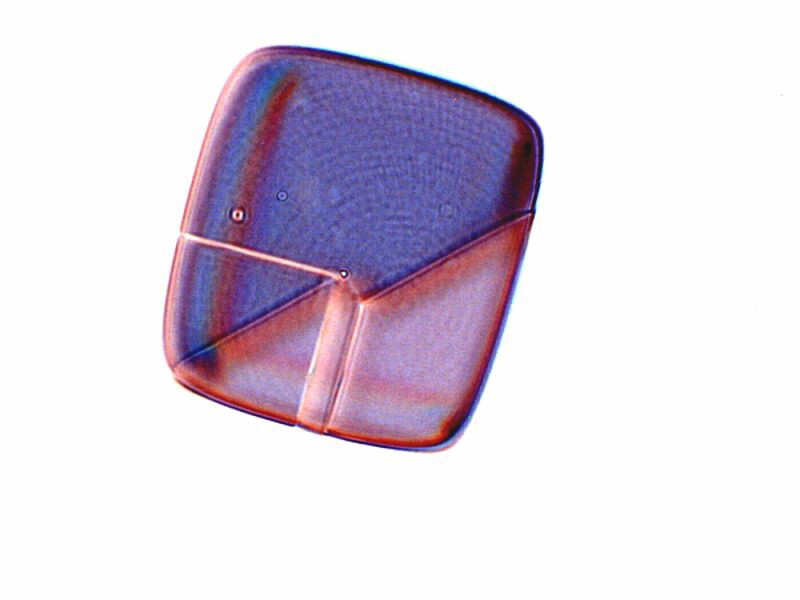
This one is a mixture of MC and generic Alkaseltzer.
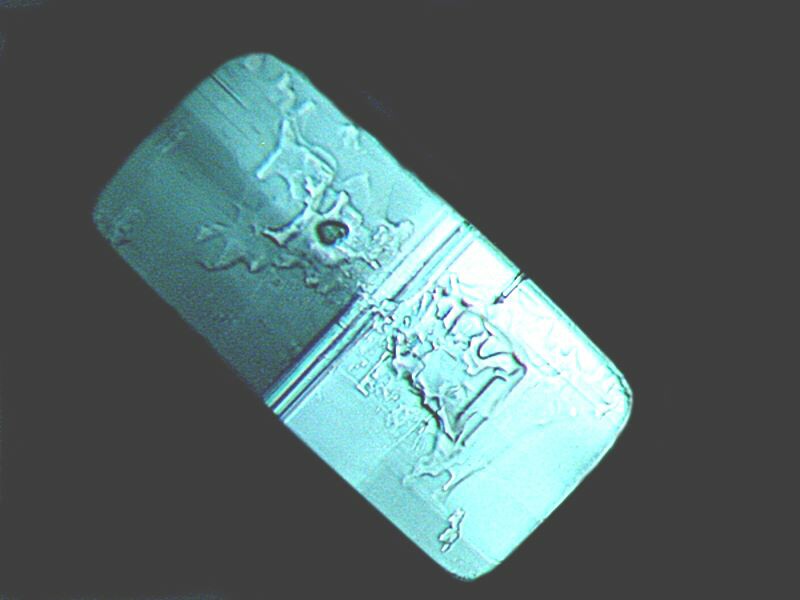
And here we have, believe it or not, MC combined with a drop of Elmer’s Gel Glue.
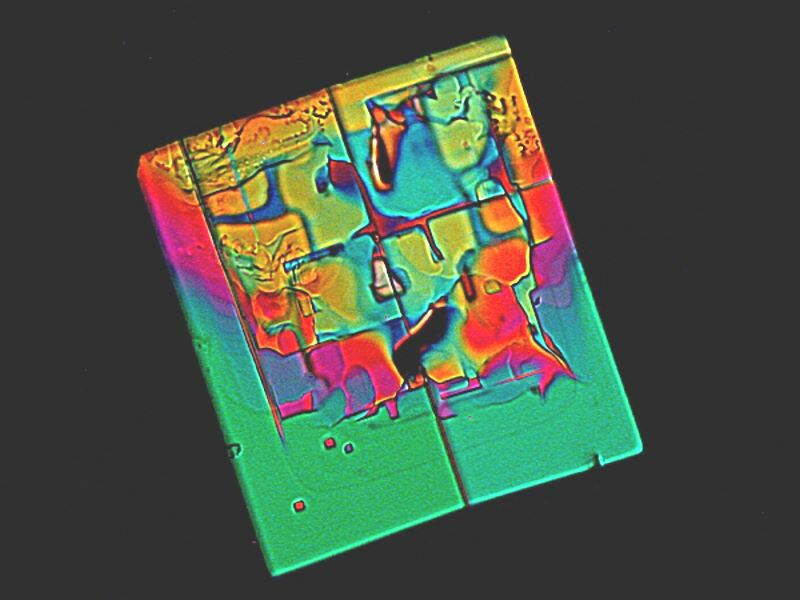
Finally, MC mixed with DAPI a fluorochrome stain.
Do experiment with Magnesium chloride and be prepared to become addicted.
All comments to the author Richard Howey are welcomed.
Editor's note: Visit Richard Howey's new website at http://rhowey.googlepages.com/home where he plans to share aspects of his wide interests.
Microscopy UK Front
Page
Micscape
Magazine
Article
Library
© Microscopy UK or their contributors.
Published in the August 2020 edition of Micscape Magazine.
Please report any Web problems or offer general comments to the Micscape Editor .
Micscape is the on-line monthly magazine of the Microscopy UK website at Microscopy-UK .
©
Onview.net Ltd, Microscopy-UK, and all contributors 1995
onwards. All rights reserved.
Main site is at
www.microscopy-uk.org.uk .